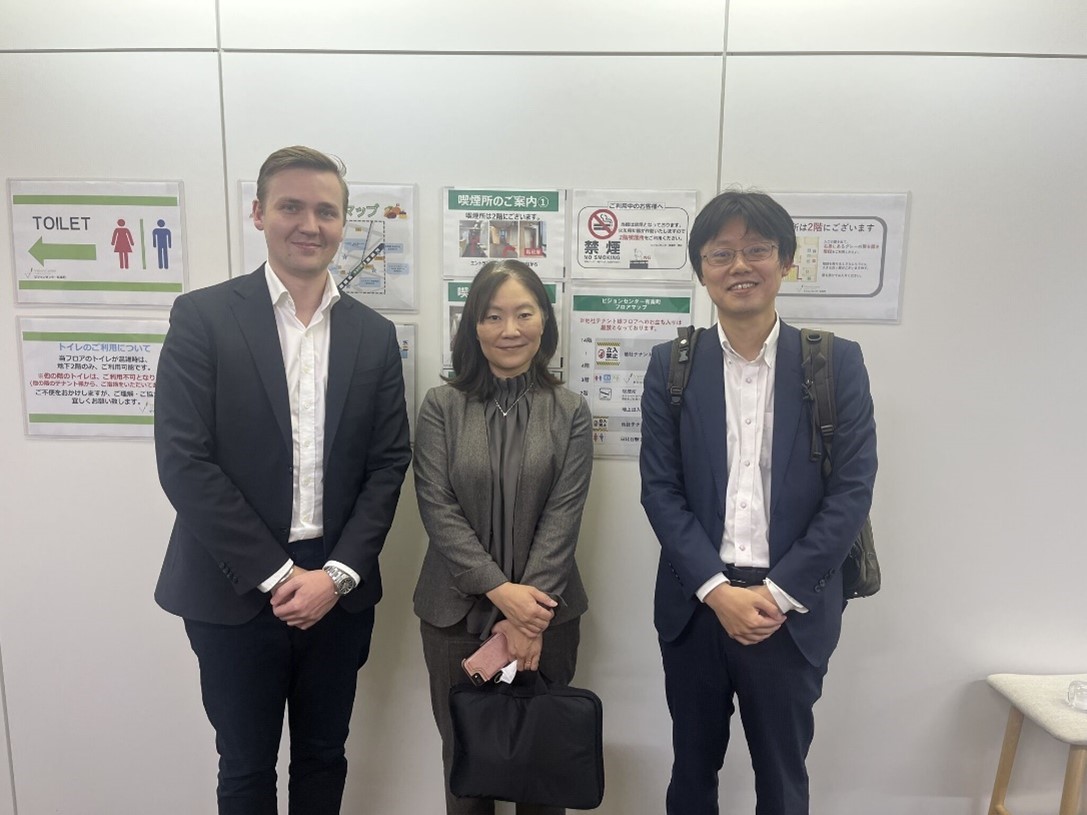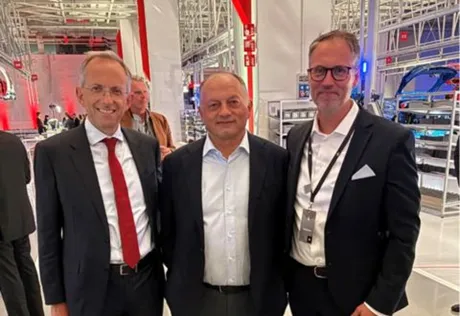Herman Ohlsson
Asisstant Portfolio Manager with a focus on the semiconductor industry, Brock Milton Capital AB
Please note:
Past performance is not a guarantee of future returns. The value of shares in the fund may go up or down, and an investor may not get back the amount originally invested
Blog & Media
Blog | 1 apr 2025
What's going on in the semiconductor industry right now? Where are we in the cycle? In the middle of March, I visited more than 20 semiconductor companies in Japan and Taiwan to hear what they had to say about the current environment and to learn about the latest trends in the industry. In short, this trip taught me that we're in a new phase of the cycle. Companies have moved out of the vigorous investment phase needed to meet the post-pandemic demand and now find themselves sitting with high inventories as demand slows. AI remains a constant theme, although it too has been showing its colors recently, owing to increased uncertainty spurred by the daily threat of one tariff after another. This trip confirmed the picture we have of the industry at the moment, which is why we already started reducing our weighting in semiconductor companies last year, cutting this from 17% in BMC Global Select at the start of 2024 to now be 10%.
This blog post offers the key points I took away from this trip to meet semiconductor companies operating in various parts of the value chain.
Summary of my trip:
Without AI, a sharp decline in the semiconductor industry
Firstly, we can say there is plenty that is special about this cycle for the semiconductor industry, which is unlike anything seen before. While the various parts of the industry previously correlated closely with each other, we are now witnessing a new phenomenon—AI—that is not only a structural trend in the industry but also one of the most significant drivers since "cloud." Several of the companies I visited in Japan and Taiwan reported muted demand for PCs and smartphones as well as chips for cars and industrial use. And they're seeing no signs of any recovery in this in the near term.
The weak development in everything not related to datacenters is largely due to two factors. The first is that many bought a new PC or smartphone during the pandemic, when working from home meant little else to spend money on. The other is that there is still a very limited number of AI applications that require an upgrade of hardware. This has hampered growth, and given the increased concerns about the economy, it prompts many to postpone their purchasing decisions. Something that suggests a rebound in demand in time is that the lifetime of a PC or a smartphone is generally five years and three years, respectively. For those who bought during the pandemic, this lifetime is now drawing to an end. Both the PC and smartphone product categories sell in enormous volumes and account for around half of the global demand for semiconductors. This was one reason why we sold ASML at the start of the year; its demand was driven by volumes rather than shifts in the technology, like another of our holdings, ASM International.
China has been the weak link for the vehicle and more traditional industrials, while the tariff threats have injected more uncertainty for those companies already sitting on high inventories. Nor does a turnaround seem imminent here, if the companies themselves are to be believed. It is interesting, however, how important it has become for companies—also in this part of the industry—to "win with the winners," that is, to become a subcontractor to the companies doing well. A prime example within vehicles is BYD, where the subcontractors for which it is a customer benefit in a similar manner to how Nvidia's entire supply chain has benefited from its success.
Full focus on reducing AI chips' energy consumption
During my trip, several companies took the time to expound on the latest trends, most of all in AI chips. It's easy to sum up: It's all about reducing the energy consumption of these chips as much as possible. They simply expend too much energy today, creating massive challenges at datacenters, which have limited power at their disposal. This has accelerated innovation, not least at Nvidia, which announced at its GTC conference co-packaged optics (CPO) in its future chips. In short, this is a technology for how to package the optics in chips to communicate with each other. According to several companies we met, this can reduce energy consumption by up to 30%. As chips become larger and more complex, they take longer to test, which is a key factor for Japan's Advantest, the market leader in machines to test Nvidia's AI chips, holding a market share surpassing 80%. For example, the test time for Nvidia's new Blackwell chip is more than three times that of its predecessor Hopper.

Meeting Advantest in Tokyo. From left to right: Herman; Junko Oike, IR; and Takahiro Yamada, IR.
Nvidia's largest competitor is its own customers
The most significant trend in the semiconductor industry right now is probably the specially designed custom ASCI AI chips. This trend has gathered pace, largely as a consequence of Nvidia's total dominance. Given that Nvidia controls more than 95% of the AI chips market, several customers—such as US hyperscalers Meta, Microsoft, Google, and Amazon—have accelerated their investments in the design and development of their own chips. They are designing these predominantly with the help of Broadcom, which we own in BMC Global Select. Broadcom holds around a 70% share in the market for these chips, competing largely with Marvell and MediaTek. After Intel and AMD failed to produce competitive enough chips themselves, we can conclude that Nvidia's competition is now mainly its own customers.
The key reasons for designing their own chips are that doing so reduces their dependence on Nvidia as the sole supplier, lowers their costs, and allows them to tailor chips specifically for their own use—for example, Google's search engine or Meta's advertising algorithm. Nividia's chips are superior when it comes to data capacity, but they utilize immense amounts of power, weighing on the operational cost for these hyperscalers. On those occasions when an Nvidia chip is not required, they can use their own, which would typically be far more energy efficient and cheaper. During the trip, MediaTek explained more about its project to design a TPU chip for Google. This should rake in more than USD 4bn in turnover, highlighting how much the hyperscalers are investing in this area.
Steep rise in competition from China
Something that became apparent during this trip was how many companies pointed to a tougher environment, with a sharp rise in competition from China. This is the result of substantial investments made by the country, particularly in the past two years, to acquire machinery and equipment to produce semiconductors. This trend is slowing down and proving a headwind for many equipment companies, as many of their purchases were made before the US imposed restrictions. For example, 27% of ASML's revenues stemmed from China in Q4 2024—a figure that had been up at 47% only one quarter before. Today, China accounts for around 10% of the global production of semiconductors, and this looks set to increase in the coming years as this machinery is gradually installed. The country hasn't only been investing heavily; several companies stated that Chinese firms have been given clear instructions to select Chinese suppliers wherever possible, even if their quality is lower. This is part of the "Made in China 2025" strategic place that aims to reduce the country's reliance on tech imports and on other countries.
One interesting meeting was with Sumco, a Japanese company that manufactures the silicon wafers from which chips are made. The company has seen a considerable increase in competition from China, the process for manufacturing wafers being a mature technology that China continues to invest in. Sumco more or less said that its entire revenue base in China could vanish, while some international customers like TSMC and Samsung may also start buying cheaper Chinese wafers if the quality of these improves. This could mean the loss of a large share of Sumco's turnover to Chinese competitors in the long run.
This also makes us more cautious regarding exposure to semiconductors, as these companies can be hurt by a rise in Chinese competition. We still prefer companies in the value chain with solid market positions that benefit from clear trends or shifts in technology, and which focus on the most advanced semiconductors. Chinese competition will increase and probably impact many companies in the value chain in the future. We take a step back and wish them good luck.
Summary of the trip
As always, there is much to ponder over after a busy week of meetings in Asia. Most of all, I believe it will remain important to be selective when considering this industry. This isn't a time when a rising tide lifts all boats. The fact is that some companies look set to struggle further until we see larger rate cuts. But I arrived home with a couple of new investment ideas for the fund and with the sense of understanding more about the trends that will define the industry in the future. With semiconductors, it's always about having a longer time horizon than in other industries. Many of the trends that first started ten years ago are now the standard today. This is why company visits are so important in this sector and why you must try to understand where the industry is headed.
This is a constant reminder that there are always interesting ideas out there, provided you are willing to put in the groundwork and turn over a lot of stones.
Sources: BMC analysis, ASML Q4 report, Nvidia GTC 2024 presentation
Blog | 4 nov 2025
Blog | 17 okt 2025
Blog | 15 okt 2025
This website is using cookiesfor statistics and user experience
This website uses cookies to improve your user experience, to provide a basis for improvement and further development of the website and to be able to direct more relevant offers to you.
Feel free to read ours privacy policy. If you agree to our use, choose Accept all. If you want to change your choice afterwards, you will find that option at the bottom of the page.



